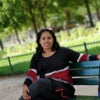Medical Tourism Makes A Comeback The demand is being led by cities such as Chennai, Delhi and Mumbai, with their world-class hospitals and services
By S Shanthi
Opinions expressed by Entrepreneur contributors are their own.
You're reading Entrepreneur India, an international franchise of Entrepreneur Media.

India's healthcare industry has grown by leaps and bounds in the last decade. After the pandemic, the adoption of tech is further driving growth. This and the ease of restrictions have led to medical tourism seeing a revival in India.
We are once seeing a huge influx of foreign nationals from Asian, African and European countries. The doctors are also no longer burdened by pandemic-related treatments and are able to focus on foreign nationals. This is being led by medical tourism industries across Chennai, Delhi and Mumbai, with its world-class hospitals and services.
"India gives world-class treatments, with great hospitals and expertise, at half the price as developed nations. During the pandemic the influx was less. Now, it's again back," said Dr. Apurva Gupta, a surgeon, working with a renowned hospital in Bangalore.
The opportunity
"International experts have already predicted a 110 per cent growth in the medical tourism sector, from $5-6 billion in 2019 to $13 billion in 2022. In terms of footfall, by 2030 alone, the country is expected to treat over 3 million international patients, four times the footfall we seamlessly manage today," says a news report.
India is also the largest producer of nurses and technicians. Furthermore, healthtech is a huge untapped space today. According to Tracxn, there are 7,849 HealthTech startups in India. These startups are supporting hospitals and the ecosystem in fast adoption of tech, opening up various opportunities in medical tourism. Tracxn data also mentions Healthtrip, Meditourz, PlanMyMedicalTrip, MedMonks, TreatGo, PSTakeCare, Oxa Health, Vaidam and Lyfboat as some of the new-age players in the space. These companies now offer end-to-end help to patients visiting India from other countries for treatment and surgeries.
The market worldwide was worth $10 billion in 2020 and is expected to grow at a compound annual growth rate (CAGR) of 12.1 per cent to hit the $37-billion mark in five years from now, according to Global Market Intelligence.
Trends Post COVID
Cosmetic tourism is one of the trend sthat is picking up after COVID. "Cosmetic surgery demand has grown a lot since COVID and is increasing with each passing month. It is picking up because of good quality work at a reasonable cost as compared to other countries. Some of the new trends within cosmetic tourism are increasing numbers of gluteal augmentation, calf augmentation, genital rejuvenation, hair transplant and body contouring," said Dr Rakesh Khazanchi, Chairman of the Department of Plastic, Aesthetic and Reconstructive Surgery at Medanta, Gurugram.
"The Indian doctors provide the full spectrum of cosmetic surgical as well as non surgical procedures. Specialised cosmetic surgery centres provide more personalised service to the patients. Digital marketing has increased the reach of the marketing to foreign shores," added Dr. Aditya Aggarwal Vice Chairman of the Department of Plastic, Aesthetic and Reconstructive Surgery at Medanta, Gurugram.
Another trend seen in non-emergency and fast recovery surgeries is that they are combined with visits to various tourist destinations. For instance, many NRIs living in more developed countries are today opting to get their cosmetic procedures done here in India during their visit to meet family and friends. This is especially true for liposuction, hair transplant, botox and filler treatments.
Regulations and other challenges
Harsimarbir Singh, co-founder, Pristyn Care shared with us the key challenge, that is, major influx from only Bangladesh. "50 per cent of medical tourism comes from Bangladesh, it doesn't come from other countries. India is much more advanced than a lot of countries in healthcare. But right now, a patient coming to India is more worried than a tourist coming to India in terms of safety, infrastructure, logistics support. For example, today patients are okay to go to Turkey or Thailand, but we are far ahead than these countries," he said.
He also added that medical tourism is a real opportunity for players like Pristyn, provided the challenges are resolved. "We need government support. For instance, we have to create Express medical visas. We have to create presence and support in the target countries," he added.
Talking about challenges faced by businesses in cosmetic surgery space, Dr. Khazanchi said, there are no clear regulations about who's authorised to do various cosmetic procedures, inevitably leading to various fly by night and non qualified people doing cosmetic procedures and leading to adverse outcomes and more complications with resultant bad press.










